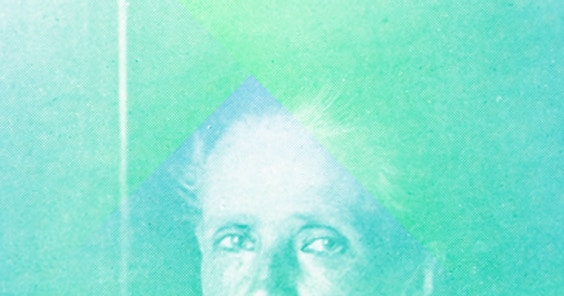I Am Sober is a free app that helps you get some control back in your life.

Heroin Addiction
Last Updated: Fri, January 19, 2024What is Heroin?
Heroin can take many forms. It’s most pure form is a “powder” that can appear white or brown.
The powder can be snorted or smoked. Usually, first-time users prefer this method due to the stigma around needles, i.e. higher risk of contracting infectious diseases such as HIV and hepatitis, as well as greater likelihood of overdose.
Impure heroin, or “Black Tar Heroin” is a sticky substance that’s the result of poor processing. Instead of pure, fine powder, the processing left behind impurities, which makes black tar heroin more dangerous. The end result is a black, sticky substance similar to coal or tar (hence the name). Users dilute and dissolve black tar heroin and then either inject it into a vein or a muscle.
Due to venous injections circulating throughout the whole body rapidly, the high from IV use is usually more potent; it requires less heroin to reach that high. Plus, because black tar heroin is full of impurities, it is usually cheaper.
What is in Heroin?
Heroin is an opiate derived from the poppy plant.
Processors extract morphine from the sap of the seed pods of the poppy. They then chemically modify morphine to create diacetylmorphine, or heroin. To make more from each batch of heroin, processors then cut heroin with a host of other ingredients, such as sugar, starch, quinine, powdered milk, acetaminophen, caffeine, and fentanyl.
One common drug cut with heroin is cocaine. The use of this combination is called speedballing. As heroin is a depressant and cocaine is a stimulant, the two drugs together act to create a calm euphoria and to stimulate at the same time. Another common combination that uses snort or inject is heroin and methamphetamine. One street name for this combination is a “goofball.” Like speedballs, goofballs both calm and stimulate at the same time. These combinations are particularly dangerous and addictive.
There has been an increase in heroin overdoses due to using heroin laced with fentanyl. Fentanyl is a synthetic opioid that is 100 times more potent than morphine, and roughly 50 times more potent than heroin.
What are Other Names for Heroin?
-
Big H
-
Horse
-
Dope
-
Junk
-
Skag
-
Mud
-
Hell Dust
-
Smack
-
Brown
What Happens When You Use Heroin?
Heroin is highly lipid soluble, so it rapidly enters the brain. Once in the brain, enzymes convert heroin into a number of chemicals, including morphine, 6-monoacetyl morphine, morphine-6-glucuronide, and morphine-3-glucuonide. Morphine rapidly binds to mu opioid receptors. This decreases the brain’s perception of distress with pain, stimulates feelings of euphoria, and stimulates dopamine release.
The effects of heroin are felt almost instantaneously – within minutes – and the effects can last for 4 to 5 hours.
Most People suffering from Heroin Addiction Started With Prescription Opiates
Because heroin is an opiate, it is in the same family as prescribed pain medication. Roughly 50-75% of people addicted to heroin started with the use of prescription pain-killers.
Many doctors prescribe opiates pain relievers for both acute and chronic pain conditions. At first, prescribers considered opiates to be non-addictive. This resulted in over-prescribing of opiates, which has led to our current opioid crisis. The problem with opiates is they can be highly addictive.
Typically, prescribed narcotics are more difficult to attain on the street. They are also more expensive than heroin. As a result, many users of painkillers eventually switch to heroin.
History of Heroin
Heroin is synthesized from morphine, which is one of the 20 or so alkaloids found in opium. Opium is a sticky sap found on the outside of poppy plant seed pods. Egyptians, Babylonians, and Sumerians first began using opium as a painkiller about 6000 years ago. Opium was traded and spread throughout the Silk road. When Britain fought for control over the East India Company, many began smuggling Indian opium into China. This led to the Opium Wars in the mid-1800s. As a consequence of this, many Chinese immigrated to America to work on the railroads, thus bringing smokable opium to the United States.
The Discovery of Morphine
A German pharmacist named Friedrich Serturner was the first to separate morphine (an active alkaloid) from opium. In 1817 he ran numerous experiments with the alkaloid on himself and others. Everyone he administered the drug to almost died, causing Serturner to name the compound “Morphium” after the Greek god, Morpheus (the god of dreams), due to its potent ability to put people to sleep. It was during this time that Serturner decided to sell the drug as a pain medication, marketing it as a cure for alcoholism – which was much more severe at the time.
By the 1830s, many were using morphine to help people deal with severe pain from surgeries or other accidents. This became far more common during the American Civil War, when doctors gave morphine to wounded soldiers. It was quickly discovered just how addictive it was.
In 1874, chemist, C.R. Alder Wright synthesized heroin (diamorphine, or diacetylmorphine), from morphine. However, not much more was done with his compound. Another chemist, working independently of Wright, Felix Hoffmann developed diamorphine while working at Bayer (a pharmaceutical company). Hoffmann’s goal was to create a codeine from acetylated morphine; essentially, he was tasked with creating a less addictive, less potent pain killer. The result was a drug almost twice as potent as morphine.
The Discovery of Heroin
Although not the first to invent heroin, Bayer named diacetylmorphine “heroin.” They then began the process of commercializing it. Allegedly the head of Bayer’s research department coined the term “heroin,” deriving it from the German word “heroisch” meaning “heroic.”
By 1895, Bayer was marketing diamorphine under the brand name Heroin. Heroin was an over-the-counter drug advertised as a cough suppressant and an alternative to morphine. In fact, Bayer claimed heroin would cure morphine addiction – much like how morphine was claimed to cure opium addiction, and opium was claimed to cure alcoholism.
The sale of heroin continued into the early 1900s. In 1914, the United States passed the Harrison Narcotics Tax Act to better control the sale and distribution of opioids. It was another 10 years before the United States banned the sale, manufacturing, and importation of heroin in 1924.
German scientists synthesized methadone in 1937 in an attempt to create a less addictive alternative to morphine. Doctors prescribed it until 1947, when it became clear that methadone was as addictive as heroin.
Heroin Today
Heroin is now a Schedule 1 drug, meaning it has no justifiable medical use. As a result, it is illegal in the United States.
According to the Centers for Disease Control and Prevention (CDC), between 2002 and 2013, the rate of heroin-related deaths has nearly quadrupled. Almost half (45%) of users were also addicted to prescription opioids.
Today (2018), America is in an opioid crisis. The crisis includes the addictive use of prescription drugs—including fentanyl—and heroin. Altogether it’s contributed to an $80 billion/year economic burden. The National Institutes of Health (NIH) and many other agencies are now working on new strategies to address the opioid epidemic.
Resources
I Am Sober is a free app that helps you get some control back in your life.



